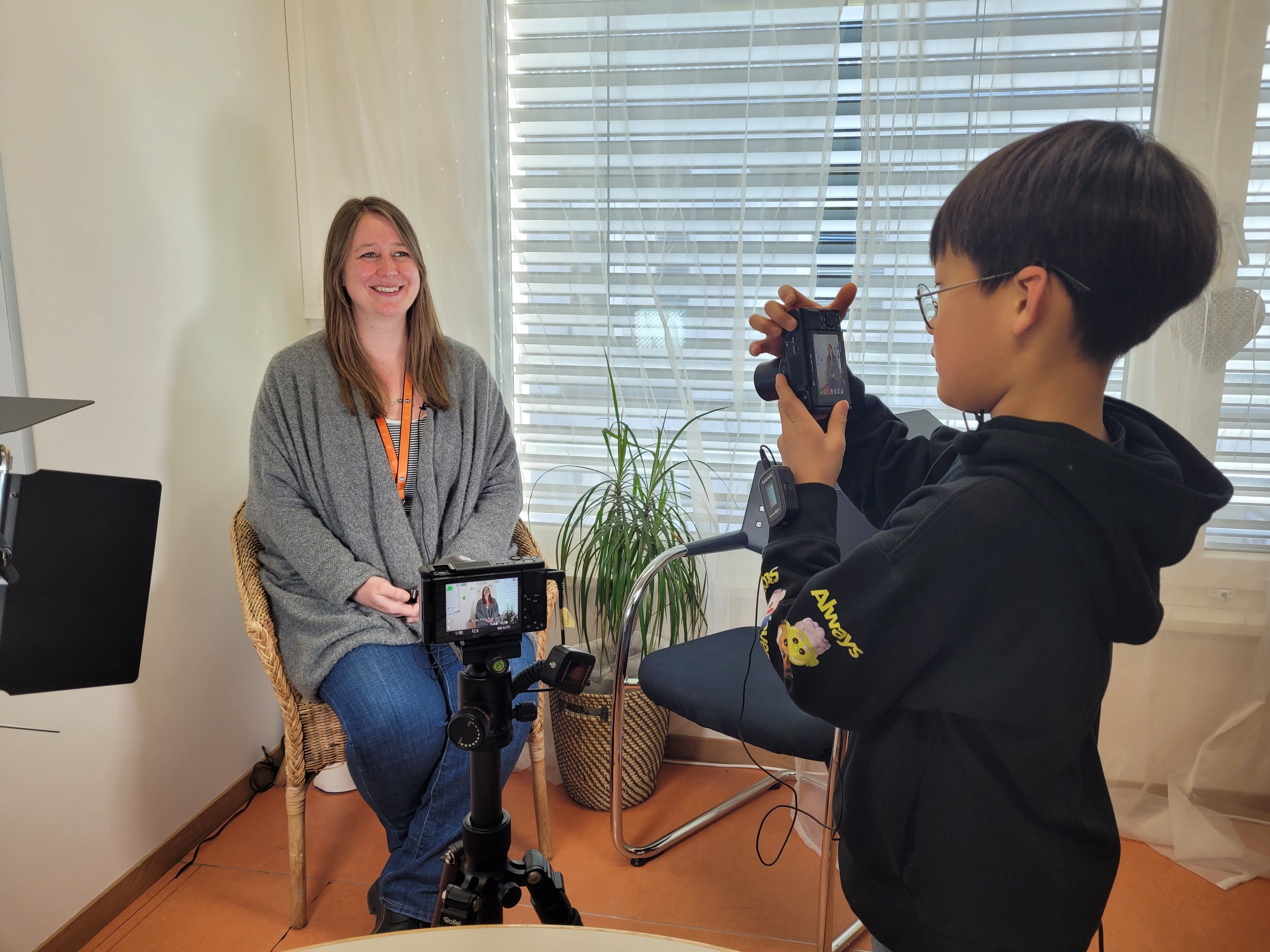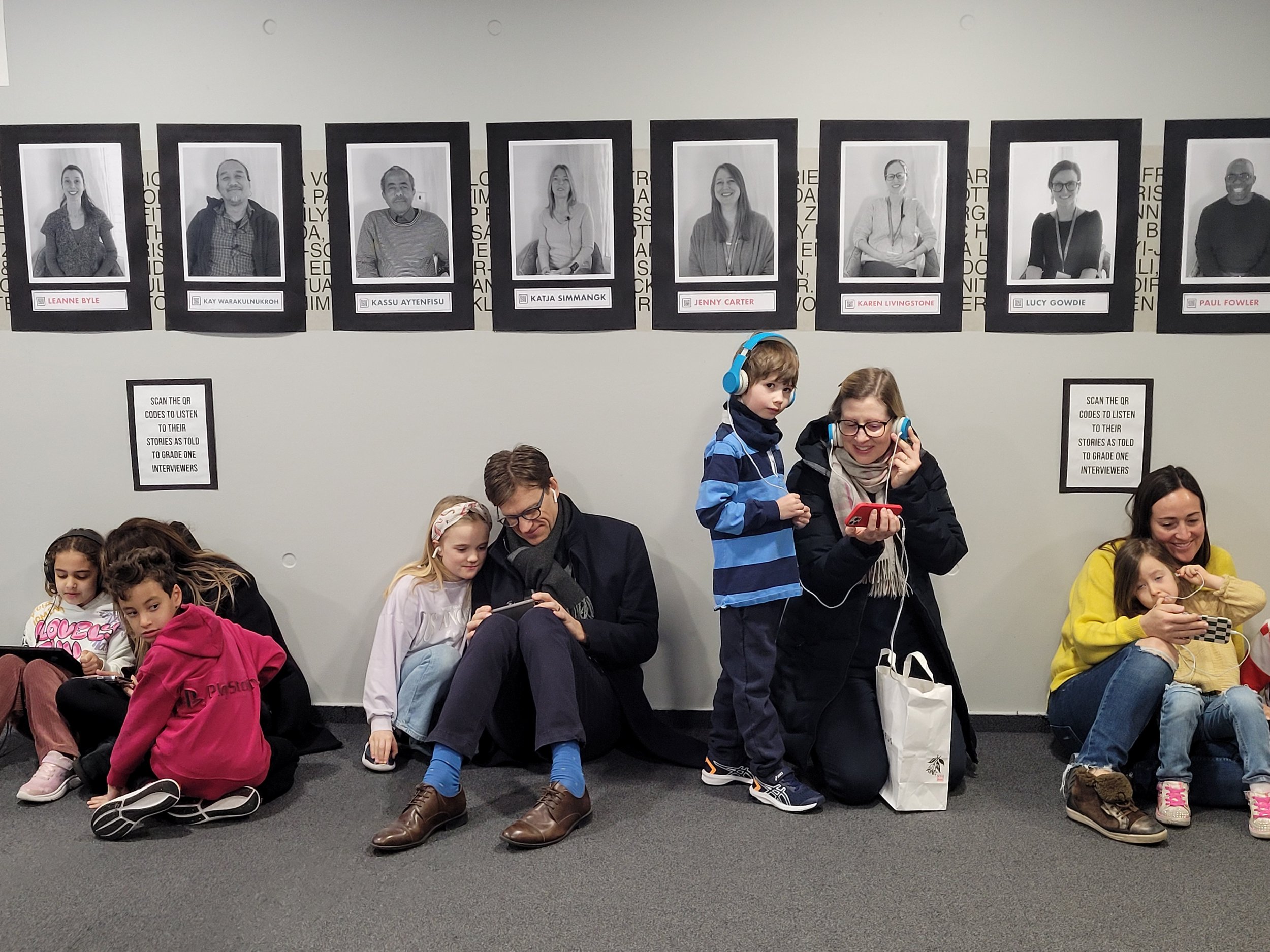A Grade 1 Learning Experience about Anti-Bias
A grade 1 student photographs a Humans of ICSZ interviewee.
In November, the grade one team at the Inter-Community School Zurich (ICSZ) embarked on an exciting journey to redesign a history unit. Working with Inspire Citizens, the team engaged in a generative process of ideation and planning that led to a vibrant outcome: Humans of ICSZ.
“We wanted to connect the present to the past through adults in the school that the students looked up to and wanted to know more about,” explains Claire Febrey, ICSZ Curriculum Coordinator. “We wanted the students to get to know and celebrate our community, and make authentic connections with our community members.”
The result? A powerful exhibition of photo portraits of community members (with photos taken by the students at a local photography studio), and a book about the community members’ stories (written and designed by the students).
Sarah Turton, a grade 1 teacher, explains that the unit began with a read-aloud about an elderly woman’s memories and artifacts connected to the past.
“The read-aloud was a great way to kick off the unit and our EAL teacher had a bunch of artifacts related to her grandparents that she brought in as a provocation. The students guessed what the artifacts were used for – things like an antique coffee grinder, a wooden board game and pencil box and old roller skates. They used a ‘see, think, wonder’ thinking routine and sorted the artifacts into categories of home, school and play or sports. All the interviewing and writing they did was based around those three topics as a result,” says Sarah.
The students compared the artifacts with related objects today, and did some sketches and writing about those connections. They then identified who they wanted to interview in the community to learn about their experiences as children to learn more about home, school and play time from the past.
James Forsythe, another grade 1 teacher, says the students chose people ranging from teaching assistants at ICSZ to playground and cafeteria staff.
“The students learned about asking questions and they wrote three initial questions for their interviews, one for each category of home, school and play. Then they practiced creating follow-up questions and how to ask ‘how and why’ questions,” says James.
Documenting the learning: some grade 1 questions in preparation for Humans of ICSZ.
Adults in the ICSZ community were honoured to be asked to take part in the learning experience and many brought artifacts with them to the interviews. Students, in the meantime, had been learning about how to take photographs so they could shoot studio portraits to accompany the interviews.
“There was such a human side to this unit, and the students learned so much about compassion and empathy,” says James. “Perspectives grew and changed, and there were such rich conversations during and after the interviews.”
A Humans of ICSZ interview in progress.
Others in the ICSZ community supported the learning experience, too. For instance, the tech coach taught students how to make QR codes so they could include those in their exhibition, allowing viewers to access audio interviews to complement the portraits. These were enlarged and hung in the school’s main atrium along with signs made by the students during their art classes.
The Humans of ICSZ exhibit.
Listening to Humans of ICSZ stories in the school atrium.
“This was an amazing collaborative project that involved our tech coach, support teachers, teaching assistants and the EAL teacher. Everyone on the grade one team was involved,” adds Sarah. “It was also wonderful to see the students being curious and asking questions. These are skills they can use in any unit.”
Claire was excited about the photography exhibition that resulted from this unit. She says that “it was an excellent celebration of learning with high engagement from the students at every turn.”
A slide used to promote the Humans of ICSZ exhibit and bring community members into the learning space.
Steve Sostak, late co-founder of Inspire Citizens, worked with the grade 1 team throughout the fall to redesign this unit, and his passion for creating deep and authentic learning experiences is an incredible legacy in how the unit unfolded. Claire, Sarah and James all speak with reverence and gratitude for Steve’s impact on this unit and on their journeys as educators.






